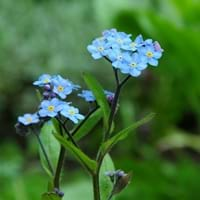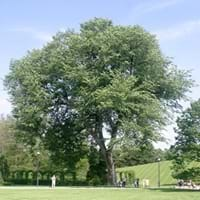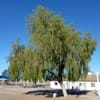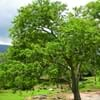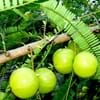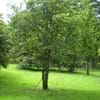What is
Life Span
Annual and Perennial
Perennial
Type
Flowering Plants, Shrubs
Tree
Origin
Eastern Asia
North America
Types
Bigleaf hydrangea, Hortensia, Smooth hydrangea, Oakleaf hydrangea, Annabelle
Water elm
Number of Varieties
100
99+
Not Available
Habitat
Fields, gardens, meadows, rocky outcrops, waste ground, yards
Floodplains, Hillside, stream banks, Swamps, Upland
USDA Hardiness Zone
Not Available
3-9
AHS Heat Zone
8 - 1
9-1
Sunset Zone
21,22
1a, 1b, 2a, 2b, 3a, 3b, 4, 5, 6, 7, 8, 9, 10, 11, 14, 15, 16, 17, 18, 19, 20, 21
Habit
Clump-Forming
Upright/Erect
Information
Plant Size
Minimum Height
25.00 cm
99+
1,830.00 cm
22
Minimum Width
25.40 cm
99+
910.00 cm
23
Plant Color
Flower Color
Blue, White
Green
Flower Color Modifier
Bicolor
Bicolor
Fruit Color
Not Available
Tan
Leaf Color in Spring
Green, Gray Green
Light Green
Leaf Color in Summer
Green, Gray Green
Dark Green
Leaf Color in Fall
Green, Gray Green
Light Yellow
Leaf Color in Winter
Light Green
Not Available
Shape
Leaf Shape
Lanceolate
Oblique base
Thorns
No
No
Season
Plant Season
Spring, Summer
Spring, Summer, Fall, Winter
Growing Conditions
Sunlight
Full Sun, Partial Sun
Full Sun
Growth Rate
Fast
Fast
Type of Soil
Loam
Loam
The pH of Soil
Acidic, Neutral
Acidic, Neutral
Soil Drainage
Well drained
Average
Bloom Time
Early Spring, Spring, Late Spring, Early Summer, Summer, Late Summer
Early Spring
Repeat Bloomer
Yes
No
Tolerances
Not Available
Cold climate, Drought, Pollution, Salt
Care
Where to Plant?
Ground
Ground
How to Plant?
Divison, Seedlings
Rooted stem cutting, Seedlings, Stem Planting
Plant Maintenance
Medium
Low
Watering Plants
Watering Requirements
Do Not over Water
Average Water Needs, Requires regular watering, Requires watering in the growing season, Water Deeply
In Summer
Lots of watering
Ample Water
In Spring
Moderate
Average Water
In Winter
Average Water
Average Water
Soil
Soil pH
Acidic, Neutral
Acidic, Neutral
Soil Type
Loam
Loam
Soil Drainage Capacity
Well drained
Average
Sun Exposure
Full Sun, Partial Sun
Full Sun
Pruning
Remove damaged leaves, Remove dead branches, Remove dead leaves
Remove dead branches, Remove dead or diseased plant parts, Remove hanging branches
Fertilizers
All-Purpose Liquid Fertilizer
Fertilize every year, fertilize in growing season, Nitrogen, Phosphorous, Potassium
Pests and Diseases
Red blotch
Bark beetles, Beetles, Borers, Mites, Moth, Red blotch, Scale
Plant Tolerance
Drought
Cold climate, Drought, Salt
Facts
Flowers
Showy
Insignificant
Flower Petal Number
Single
Single
Fruits
Showy Fruit
No
No
Edible Fruit
No
No
Fragrance
Fragrant Flower
No
No
Fragrant Fruit
No
No
Fragrant Leaf
No
No
Fragrant Bark/Stem
No
No
Showy Foliage
No
No
Showy Bark
No
No
Foliage Texture
Medium
Medium
Foliage Sheen
Matte
Matte
Evergreen
No
No
Invasive
No
No
Self-Sowing
Yes
Yes
Attracts
Bees, Flies
Not Available
Allergy
Chest tightness, Diarrhea, Dizziness, Nausea, Vomiting
allergic reaction, Asthma
Benefits
Uses
Aesthetic Uses
Beautification, Cottage Garden, Ground Cover, Showy Purposes
Landscape Designing
Beauty Benefits
Not Available
Not Available
Edible Uses
Yes
Yes
Environmental Uses
Air purification
Absorbs greenhouse gases, Absorbs huge amounts of CO2, Air purification, Food for birds, Forms dense stands, Nesting sites for birds, Prevent Soil Erosion, Shelter for wildlife, Wildlife
Plant Benefits
Medicinal Uses
Fever, Kidney problems, Urinary tract problems
Antispasmodic, Astringent
Part of Plant Used
Flowers, Root
Bark, Stem, Tree trunks, Wood
Other Uses
Culinary use, Used as Ornamental plant
Used as firewood, Used for woodware, Used in biomass, Used in construction, Used in Furniture, Used in paper industry, Used in pulpwood and lumber production, Wood is used for making furniture, Wood is used for ship building, Wood is used fore making tools, Wood is used in construction, Wood log is used in making fences
Used As Indoor Plant
No
No
Used As Outdoor Plant
Yes
Yes
Garden Design
Bedding Plant, Cottage garden, Edible, Hanging Basket, Wildflower
Feature Plant, Shade Trees, Street Trees
Scientific Name
Botanical Name
Myosotis arvensis
ULMUS americana
Common Name
Forget-Me-Not
American Elm
In Hindi
Forget-Me-Not
अमेरिकी एल्म
In German
Forget-Me-Not
amerikanische Ulme
In French
Forget-Me-Not
orme d'Amérique
In Spanish
Arce japonés
olmo americano
In Greek
Forget-Me-Not
American Elm
In Portuguese
Forget-Me-Not
olmo americano
In Polish
Forget-Me-Not
Amerykański wiązu
In Latin
Forget-Me-Not
Latin ulmo
Classification
Kingdom
Plantae
Plantae
Phylum
Magnoliophyta
Magnoliophyta
Class
Magnoliopsida
Magnoliopsida
Order
Lamiales
Rosales
Family
Boraginaceae
Ulmaceae
Genus
Myosotis
Ulmus
Clade
Not Available
Angiosperms, Eudicots, Rosids
Tribe
Not Available
Not Available
Subfamily
Not Available
Not Available
Number of Species
200
99+
40
99+
|
||
|
||
|
